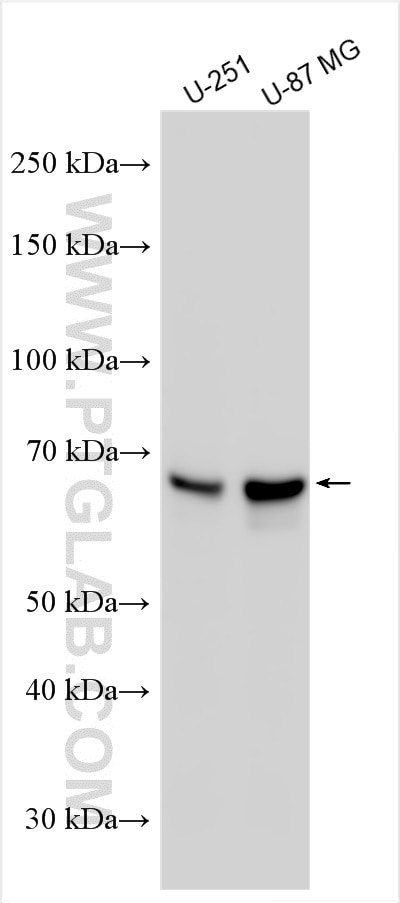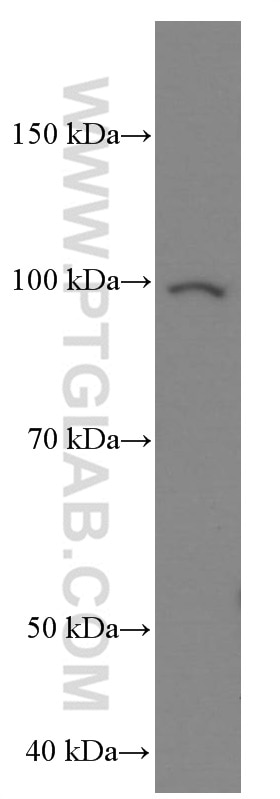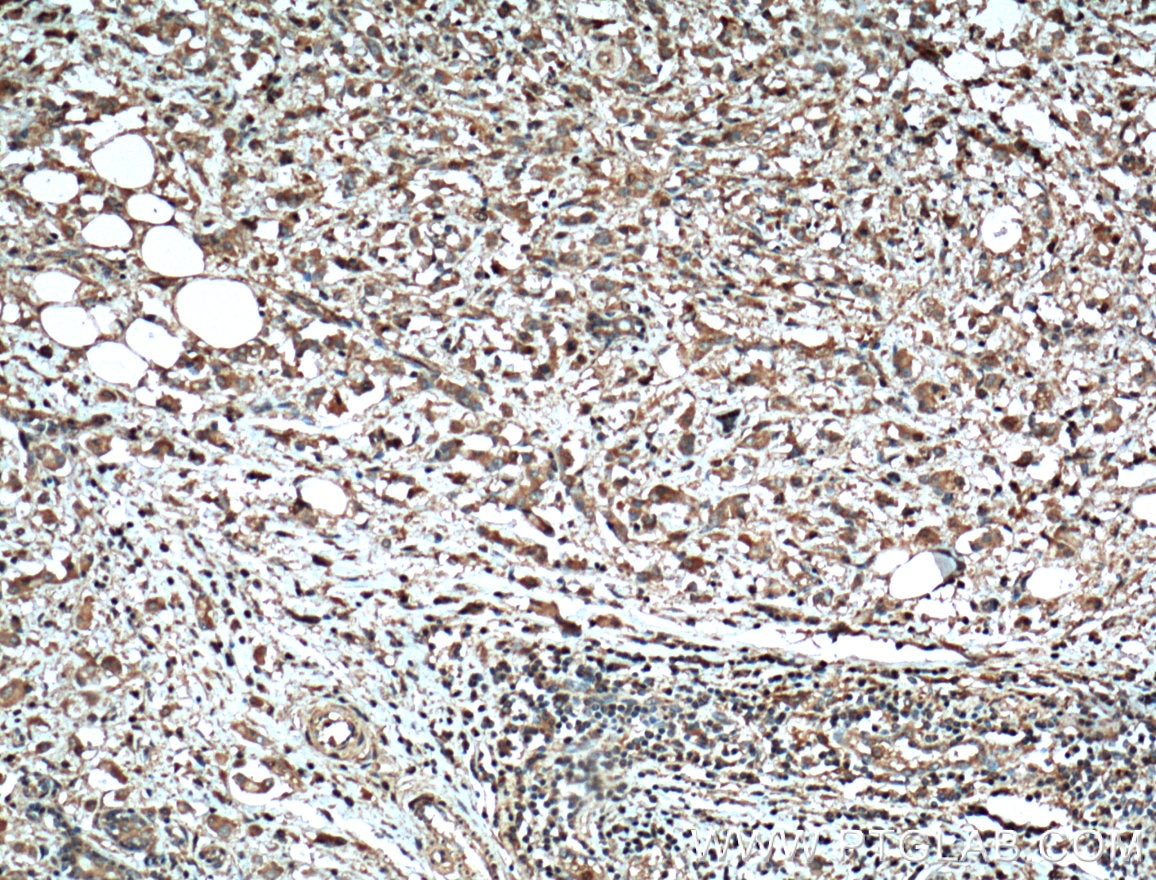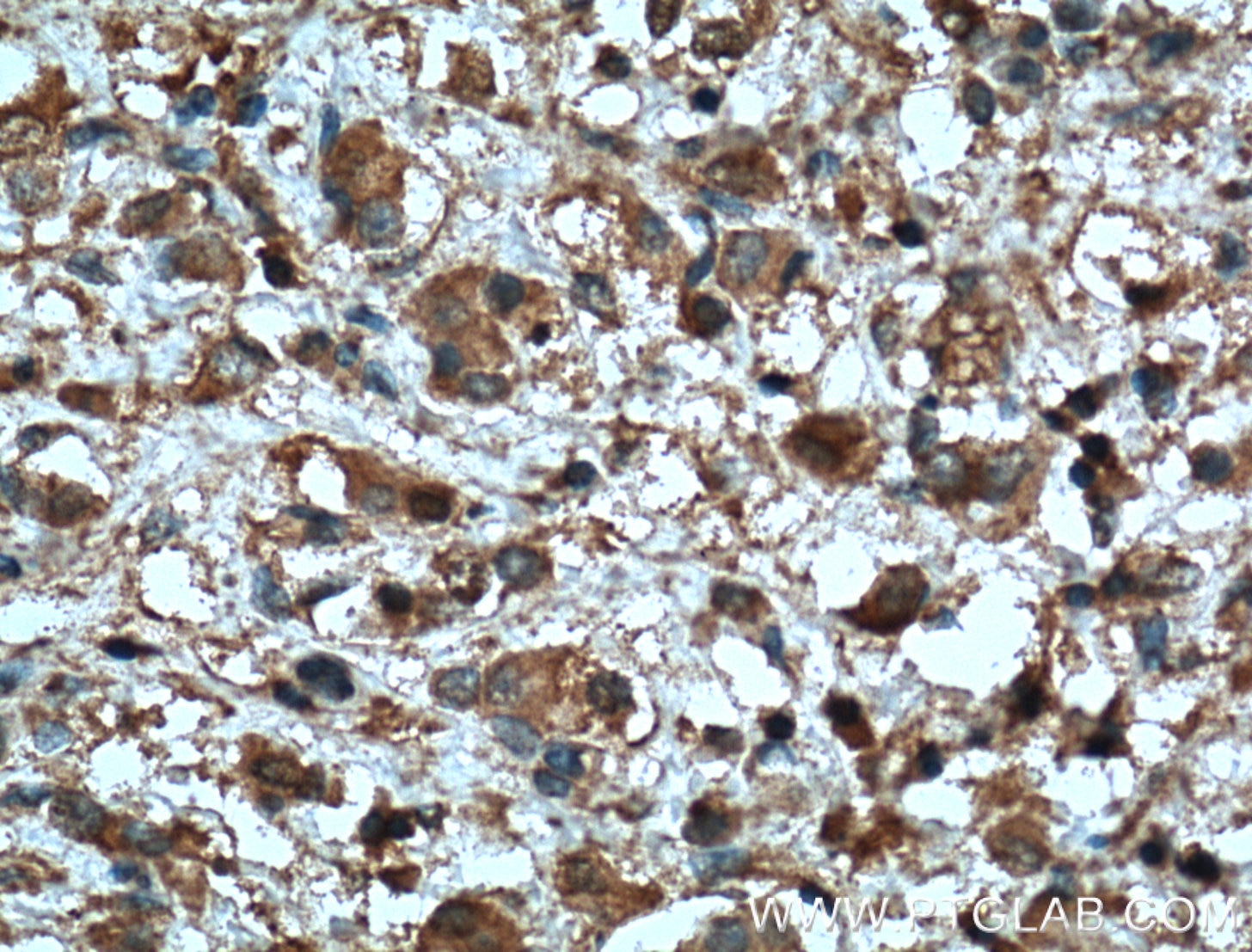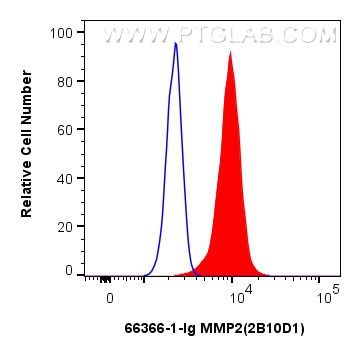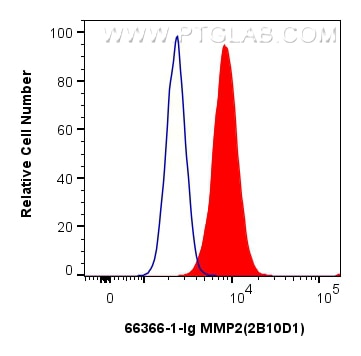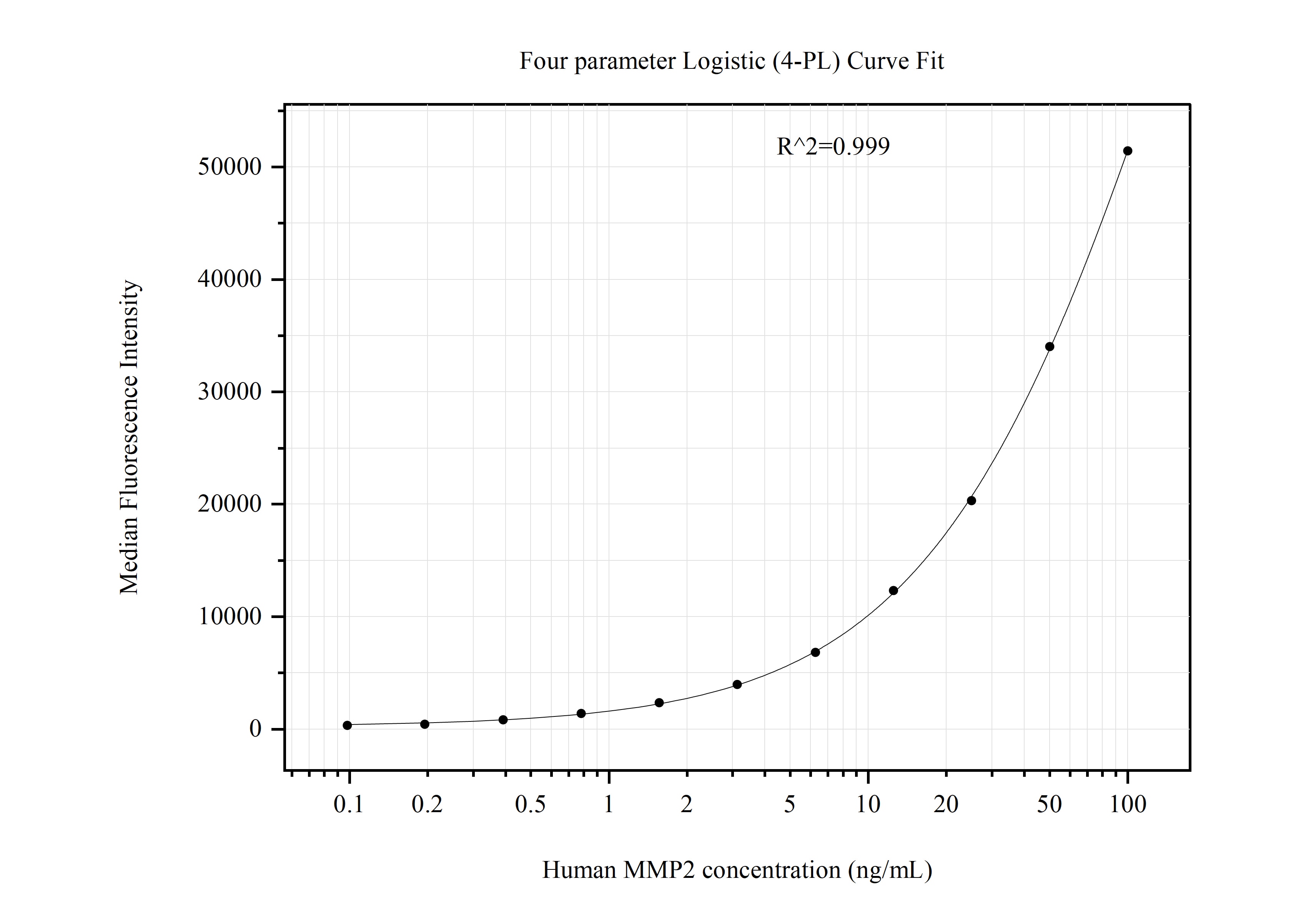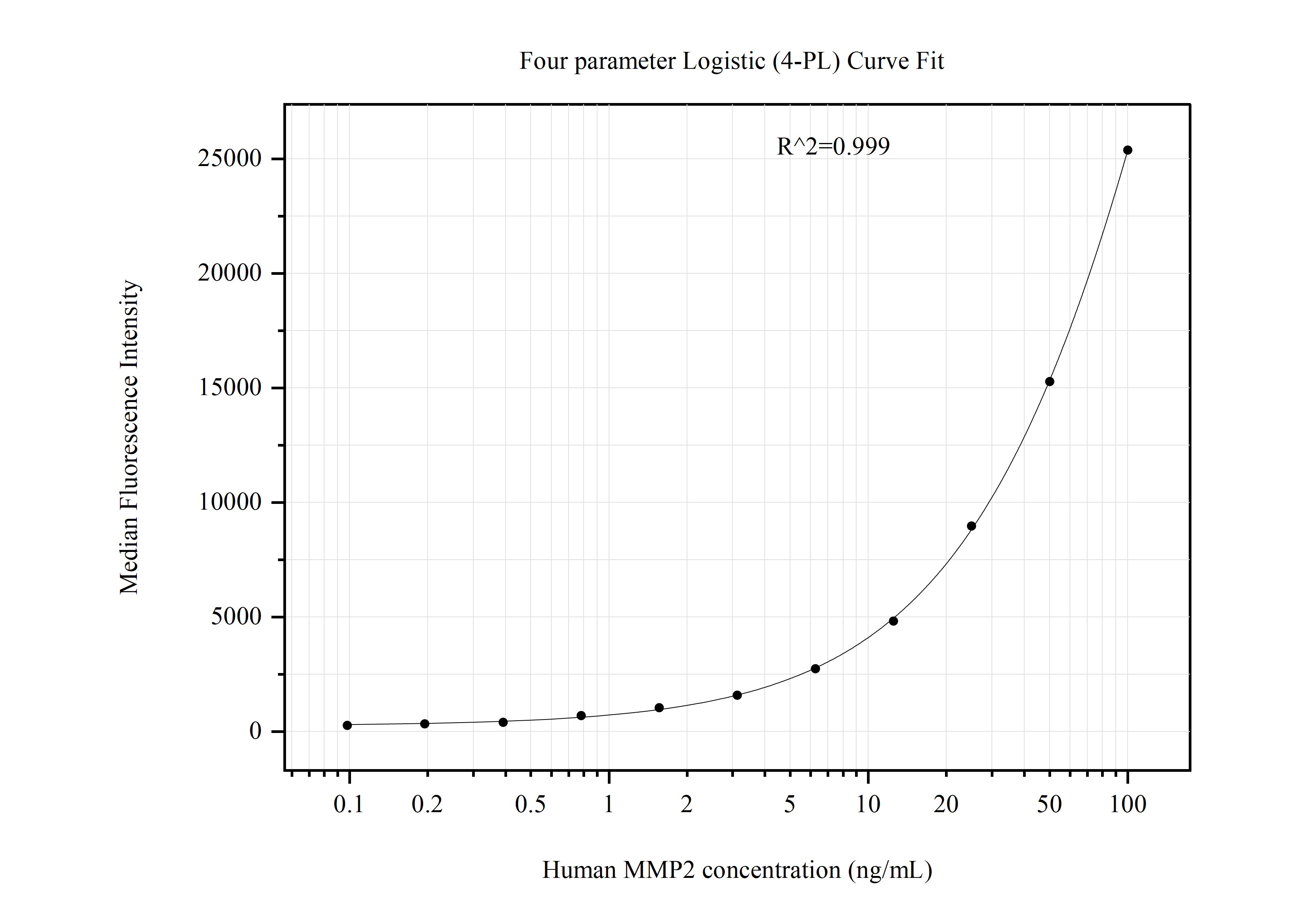- Featured Product
- KD/KO Validated
MMP2 Monoklonaler Antikörper
MMP2 Monoklonal Antikörper für WB, IHC, FC (Intra), Cytometric bead array, Indirect ELISA
Wirt / Isotyp
Maus / IgG1
Getestete Reaktivität
Hausschwein, human, Maus, Ratte
Anwendung
WB, IHC, FC (Intra), Cytometric bead array, Indirect ELISA
Konjugation
Unkonjugiert
CloneNo.
2B10D1
Kat-Nr. : 66366-1-PBS
Synonyme
Geprüfte Anwendungen
Veröffentlichte Anwendungen
| IHC | See 1 publications below |
Produktinformation
66366-1-PBS bindet in WB, IHC, FC (Intra), Cytometric bead array, Indirect ELISA MMP2 und zeigt Reaktivität mit Hausschwein, human, Maus, Ratten
| Getestete Reaktivität | Hausschwein, human, Maus, Ratte |
| In Publikationen genannte Reaktivität | human |
| Wirt / Isotyp | Maus / IgG1 |
| Klonalität | Monoklonal |
| Typ | Antikörper |
| Immunogen | MMP2 fusion protein Ag25039 |
| Vollständiger Name | matrix metallopeptidase 2 (gelatinase A, 72kDa gelatinase, 72kDa type IV collagenase) |
| Berechnetes Molekulargewicht | 72 kDa |
| Beobachtetes Molekulargewicht | 55-74 kDa |
| GenBank-Zugangsnummer | BC002576 |
| Gene symbol | MMP2 |
| Gene ID (NCBI) | 4313 |
| Konjugation | Unkonjugiert |
| Form | Liquid |
| Reinigungsmethode | Protein-G-Reinigung |
| Lagerungspuffer | PBS only |
| Lagerungsbedingungen | Store at -80°C. 20ul Größen enthalten 0,1% BSA. |
Hintergrundinformationen
MMP2, also named as CLG4A, Gelatinase Am, TBE-1 and PEX, belongs to the peptidase M10A family. It is ubiquitinous metalloproteinase that is involved in diverse functions such as remodeling of the vasculature, angiogenesis, tissue repair, tumor invasion, inflammation, and atherosclerotic plaque rupture. MMP2 contributes to myocardial oxidative stress by regulating the activity of GSK3beta. It cleaves GSK3beta in vitro. MMP2 can be cleaved into PEX chain(~60kd).Western blot analysis showed that the 72 kDa and 62 kDa proteinase activities were pro-MMP2 and the active enzyme,respectively(PMID:11112697).
